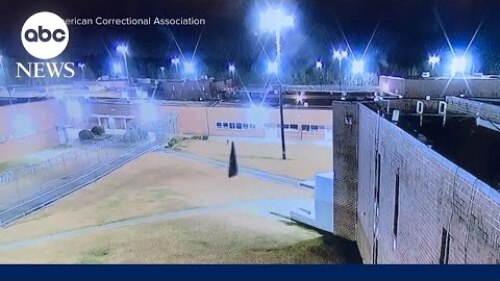By Justin Garcia
Tampa Bay Times
TAMPA BAY, Fla. — The Pinellas County jail has become so crowded in recent months that deputies have run out of regular beds and been forced to provide hundreds of mattresses held a few inches from the ground by plastic frames.
Sheriff Bob Gualtieri said he hasn’t seen crowding like this in more than a decade. He pointed to a state bail reform law, saying the jail population has climbed steadily since January after the bill went into effect. The law tightens rules to release someone before trial and makes it more costly in some instances for defendants to get out on bond.
“We’re walking a tightrope with the population this high,” Gualtieri said, noting that limited space has increased tension among the incarcerated people and put a strain on staffing and resources.
“The law is the right concept, but we have to find a way to level this out.”
The Hillsborough County Sheriff’s Office also said its jail population has increased since January and that the law was partially responsible. Pasco County acknowledged its jail was over capacity but did not talk about why.
House Bill 1627 was touted by lawmakers as a way to make bail procedure uniform across the state and to limit violent criminals from being released before seeing a judge. The law, passed in 2023, required the Florida Supreme Court to create statewide uniform bond recommendations. Previously, each of Florida’s judicial circuits could decide on bail amounts independently.
Under the law, judges can increase the amount of bail beyond what the Supreme Court recommends. But to reduce it, a jurisdiction would have to petition for the court’s approval.
The law also made it more difficult for people arrested for misdemeanors who can’t afford bail to be released until their court dates.
The amount of people in the Pinellas County jail fluctuates week to week but has been above capacity since January. The jail has 2,915 beds and is meant to hold up to 3,000 incarcerated people.
On Aug. 8 , it held 3,200.
Those sleeping on floor beds are set up in large holding cells. During a recent visit, some men read while lying on the low-slung cots. Others put rags over their faces and tried to rest. When jail guards need to lock down a unit, the men cram into cells meant for two.
Gualtieri said he supported the law initially because it’s good to have consistency across the state in how bail works. But he said the law should be tweaked to address the growing number of low-level offenders waiting in jail for weeks or months until trial.
Col. Paul Carey, who oversees the Pinellas County jail, said more people are being held longer for minor crimes.
A man facing a criminal mischief charge was in custody for more than 195 days in late July, a sheriff’s office report says. A woman arrested for a DUI: more than 83 days. A man charged with trespassing had served over 183 days.
Carey said that before the law changed, if a person committed a low-level crime, the sheriff’s office would evaluate them at booking. If they didn’t seem like a threat to society, they would be released with a judge’s approval and a promise to show up at their court date. Carey said the law eliminated the jail staff’s discretion. Now, only judges can make that decision.
From January to June 2023, 1,865 people were released under such conditions, Carey said.
In the same time frame this year, 414 were released.
Carey said deputies are working more overtime with this many people in jail. And he said he worries about what the jail will do if a hurricane heads this way. The jail is in Flood Zone A, and officials are supposed to evacuate people to higher levels in the jail, Carey said. But he said space would be tight with such a high population.
“There’s just nowhere for them to go,” Carey said.
The Hillsborough County Sheriff’s Office reported a 12% increase in the inmate population at its two jails between the beginning of the year and July 29 . The office said the bail reform law is a “contributing factor” to the increase but added that requests for mental health competency hearings have led to people being held longer than usual.
The Pasco County jail went over capacity earlier this year while also seeing a rise in population since January. A spokesperson said the county “cannot provide assumptions” as to whether the bail law is the reason.
Rocky Brancato , chief operations officer for the Hillsborough County public defender’s office, said in an email that HB 1627′s impact is “tremendous.” He said rather than create uniformity, the law has given more power to judges to set bond higher.
“Bonds now have greater variance by judge or courtroom,” wrote Brancato, who lost a bid for public defender in this month’s election to Lisa McLean, a private defense lawyer.
Brancato said the previous bond rules were not perfect, but they gave steady guidance to the courts. The consistency with bonds that the county saw in the past has “diminished” he said.
Spokespeople for Hillsborough and Pinellas courts declined to comment for this story.
State Rep. Peggy Gossett-Seidman , R- Highland Beach , co-sponsored the law and said low-level offenders getting stuck in jail might be an “unintended consequence.”
She said it was designed to protect victims and the public from violent criminals.
“But perhaps we need to take another look at the law,” she said.
—
©2024 Tampa Bay Times.
Visit tampabay.com.
Distributed by Tribune Content Agency, LLC.





